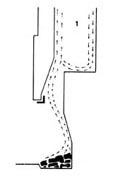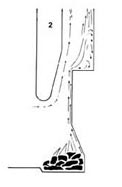 |
|
|||
|
|
||||
|
Home
Our Products
Advantage
History
System
FAQ
PDF
Contact Us
Find Us
|
||||
|
The History of Bellfires |
||||
|
|
||||
|
The discovery of fire, Darwin wrote in The Descent of Man, “was
probably the greatest ever made, excepting language. It dates from
before the dawn of history.”
The earliest fireplaces were no more than open hearth fires, confined by some arrangement of stones. As early man moved indoors, the smoke from these fires was left to find its own way out - through the cave entrance, a hole in the roof, or seeping through the loose stones of early dwellings. When civilized man began building substantial houses, he developed the chimney which brought a flue down close to the fire in the hopes of drawing off smoke. These early fireplaces were very inefficient, drawing a good deal of the heat up the chimney while admitting an unbearable amount of smoke into the room. In the late 1700’s, Benjamin Thompson, Count of Rumford, recognizing that a fireplace heats an area by radiation, began a series of experiments aimed at improving its performance. He discovered through observations and various constructions that the exaggerated width of the chimney of his time, necessitated by the need for room for a chimney sweep to climb through the throat area into the flue, was a primary cause of inefficiency and smokiness. He attributed the problem not only to the chimney, but the width of the throat and also specific fireplace dimensions and configurations. Using the knowledge gained from his studies, Rumford modified the traditional fireplace design into one that burned cleaner and hotter and, most importantly, did not smoke. His efforts greatly improved the performance of the fireplace. |
||||
 |
||||
|
1. Benjamin Thompson, Count of Rumford, over 200 years ago incorrectly
assumed that the smoke shelf deflected currents of cold air which
streamed down the back of the flue and back up the chimney with the hot
gasses which moved up the front face of the flue.
|
||||
 |
||||
|
2. Professor Peter 0. Rosin discovered, through scientific experiment,
that Rumford’s flue theory was incorrect. He observed that the hot
gasses steamed up the back wall of the flue in stratified layers and
that a smoke shelf in fact disrupted the efficient flow by creating
eddies.
|
||||
|
|
page II |
|||
| |
||||
|
|
||||
|
Home
Our Products
Advantage
History
System
FAQ
PDF
Contact Us
Find Us
Mantels Distributors Installers Order Contractor Order Form |
||||
